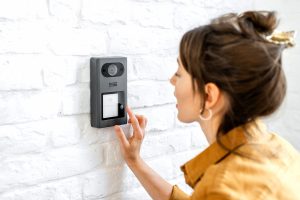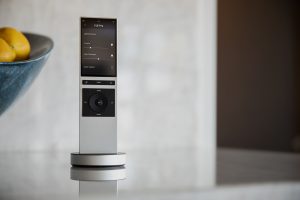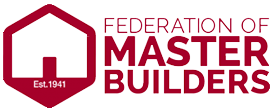Adequate security measures are essential for protecting your family, property or business owner, aiming to safeguard the assets and stakeholders.
Prevention is always better than the cure, and here is where the British security standards come in to keep yourself and your dear ones safe and secure.
Simply improve your security and living standards – Stick to the blog for potential information:
What are British Security Standards?
British security standards are some formal guidelines curated sincerely by various government UK bodies, experts and researchers to ensure a product passes the quality test.
Home Security standard measures in British identify for reliability, safety and effectiveness of electrical and non-electricity items installed in a residential place.
The purpose of making security standards
British standards of security in homes are designed to ensure that people feel safe and protected in their own homes. Here is the importance of home security British Standards:
- It helps organizations to know that the people have an appropriate set of security following necessary standards inside their homes.
- British Standards are an easy way to manage security risk– by checking if a device and asset meet the certain security standard.
- To improve security and reduce the damage and accident risks.
Categories of British Security Standards
British security standards cover broad areas, including physical, information, security and more categories. It helps users to rely on products with confidence in quality, safety and sustainability.
Here are the British Security standards’ categories:
1. Physical Security Standards
Physical security standards in British are made to protect physical entities such as buildings and assets from theft, damage and destruction.
It includes using lockers, doors & windows, and fences security measures.
2. Information Security Standards
Information security standards in British are set to protect sensitive users’ information from data breaching, attacks & viruses, data loss etc.
Safety measures include cyber security, data encryption in all risky areas etc.
3. Fire Security Standards
The concern about building fire detection, damage and prevention is covered under the fire security standards of the British.
It involves fire alarms, fire detection systems, extinguishers, fire doors etc.
4. Home Automation Security Standards
British security standards of home automation are connected with the latest technology and innovation, including securing homes with smart devices.
Smart locks, automated doors, locks, cameras and alarms cover the range of automation measures.
Ensure Complete Security with British Home Security Standards
Let us now discuss the important security standards of Homes in the British.
BS 3621: British Home Security Standard for Front & Back Premises Doors
BS3621 is the standard for locks introduced by the British standard institute. A lock following this is a good sign for qualifying security checks. Many UK insurance and government finance bodies use locks coming under bs3621 to prevent loss.
PAS 24: Standard for Doors & Windows British Home Security
PAS 24 is the minimum-security level a door must have to make it suitable for resisting attacks. It states the door sets and windows have passed and been certified per the required recommendations for protection against physical attacks, burglars and intruders.
LPS 1175: British Standard for Physical Security Products’ Resistance
LPS 1175 evaluates the resistance of physical objects, sources and protective layers from the unauthorized entrance. It also relates to the robustness of the security tool when intruder forces to gain access in illegal ways.
BS 5266-1: British Standards for Emergency Lighting Requirements
BS 5266-1 code of practice states the smart guidance of emergency lighting usages on lacking and shutting down the general lighting elements in the premises.
BS 5306: British security standard for Fire Extinguishers
BS 5306 covers two sections for fire extinguisher setup, maintenance and safety: section 3 and section 8.
- Section 3 discusses proper checking measures, setup guidance, regular services and maintenance, and precise planning before the fitting.
- Section 8 covers the importance of place, environmental considerations and proper training. Besides, the type of fire extinguishers, how they are used and on which kind of fire, and with operational temperature.
BS 5499-4: British Standards for Safety, Signs and Signals
BS 5499 is devoted to guiding through the illustration of fire warning signs that shows the route via various sign types with engaging symbols.
BS 5839: Fire Detection and Alarm System for Buildings
BS 5839 is an important British security standard that gives recommendations on the building’s planning, designs, fittings and maintenance to cover it against unfortunate fire explosions.
BS 8214: British Standard for timber-based door installation
BS 8219 British standard suggests timber-based door fittings to protect against fire. It covers rules for timber-based doors, pedestrian doors and assemblies fixed into any material.
BS 8418: Remote monitoring of detector-activated CCTV cameras
BS 8418 British security standard deals with the best practices, designs and installation of CCTV cameras to detect unauthorized activity on the premises.
Only systems set up as per BS 8418 get the Unique reference number (URN) issued by local police and therefore are responsible for taking assured responsibility for that system.
BS EN 50131: British Security Standard for Intrusion Detection Alarm Systems
BS EN 50131 Security Standard holds up every essential requirement, planning and design for the Alarm detection systems (wire or wireless). It also includes components of I&HAS but does not have necessities, installation and maintenance for I&HAS.
BS EN 50133: Security requirements in Access control systems
BS EN 50133 contains general guidelines for access control, security applications, and video surveillance systems for their best performance and operations. This British standard for security is divided into three parts.
NCP 104.3: British Standard for CCTV Camera Installation
NCP 104.3 Standard is introduced by National Security Inspectorate (NSI), a body for security and fire protection in the UK. This code of practice dictates the requirements for the surveillance systems’ design, installation, and commissioning.
What are the Different Types of Electrical Standards in the United Kingdom?
Takeaway
Review the given home security standards made according to the British government. They are essential to ensure that an organization and a product body have taken the necessary steps to conduct safe operations.
Mitigate the risks by implementing these security measures developed by British security rules and authorized bodies.
Take time to educate yourself on these practices and invest in the best possible security today and tomorrow for your surroundings.



















